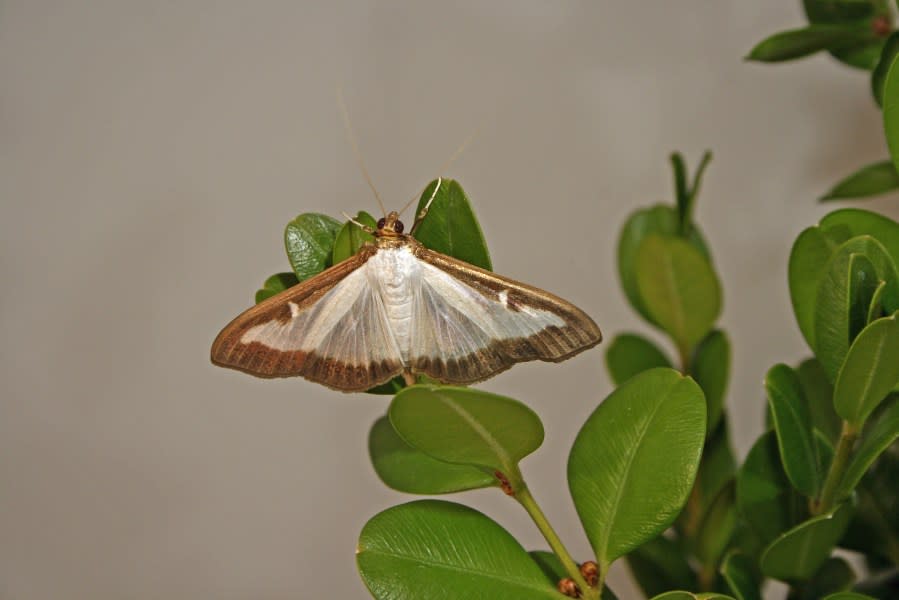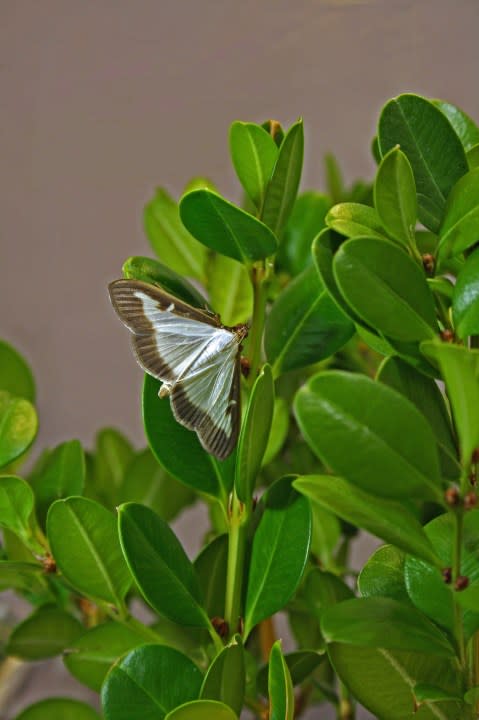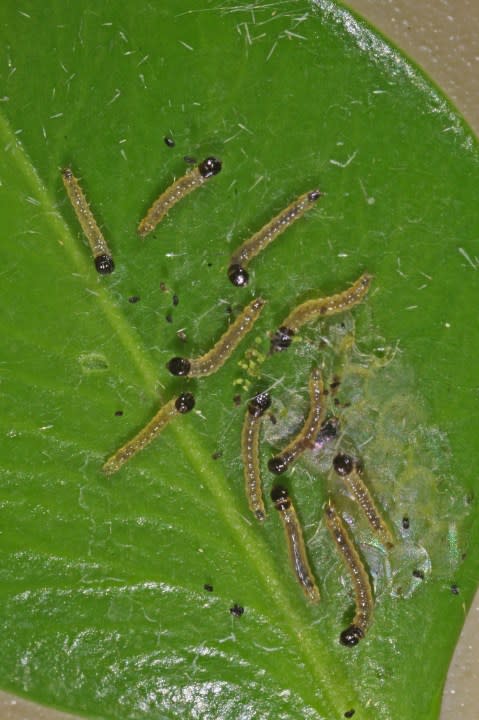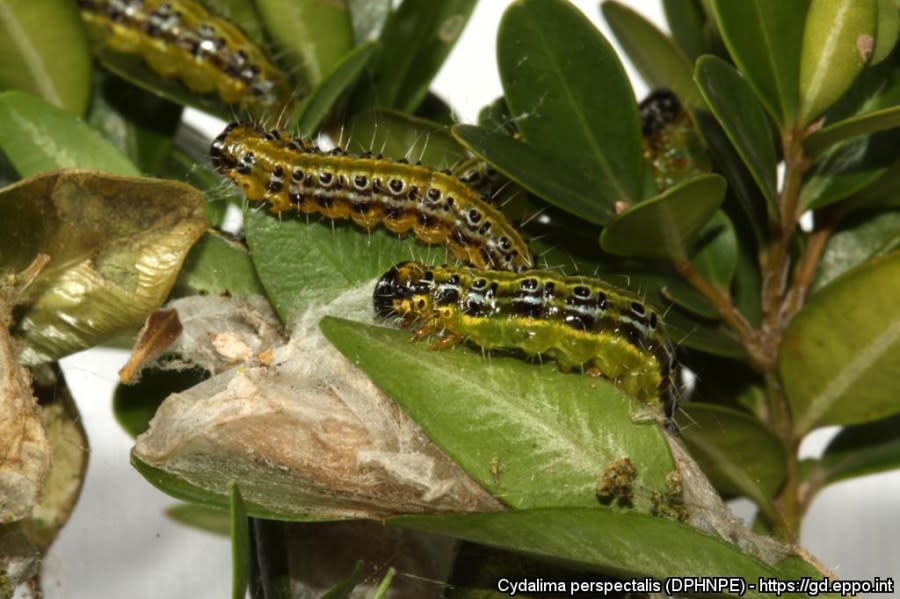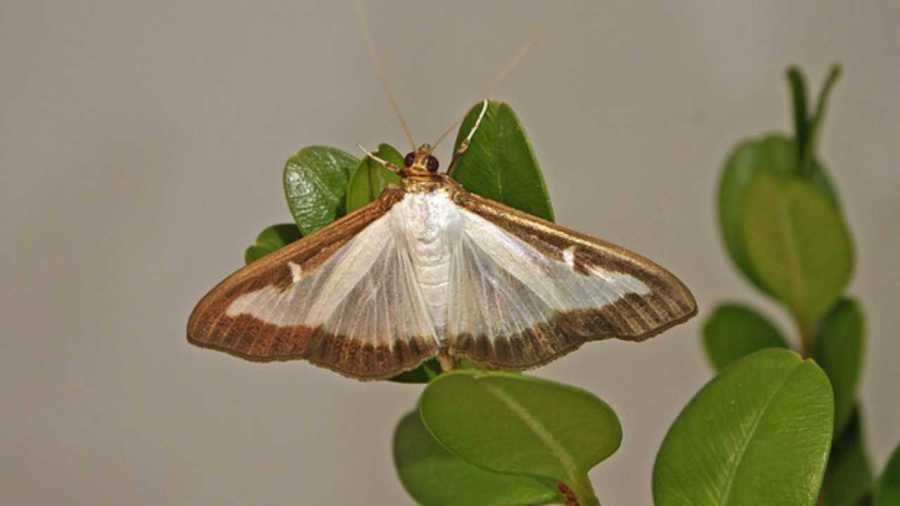If you see this bug: Report it
(WJW) – The spread of an invasive insect spotted in southern Ohio has prompted the Ohio Department of Agriculture to issue a “quarantine” on a popular decorative shrub the bug loves to munch on.
According to the ODA, beginning last week, landscapers and residents in Butler, Clermont, Hamilton, Greene, Montgomery, and Warren counties are restricted from moving boxwood shrubs out of the area.
Ohio village named among best small towns to vacation
According to the Ohio Department of Agriculture, the box tree moth is an invasive pest from East Asia that threatens boxwood plantings and the horticulture industry. Experts explain Boxwood is a valuable part of Ohio’s nursery economy.
The box tree moth was first spotted in Ohio in June 2023 near the border of Hamilton and Clermont counties. Since then more sightings have been confirmed in the quarantined counties, reports ODA.
NE Ohio has the best waterpark in the country: Study
Federal and state officials are asking the public if they believe they see a box tree moth to report it. Experts said they will conduct inspections and place traps to monitor populations.
Adult box tree moths generally have white bodies with a brown head and abdomen tip. Their wings are white and slightly iridescent, with an irregular thick brown border, spanning 1.6 to 1.8 inches, at Forest Pest Methods Laboratory, Buzzards Bay, MA. USDA photo by Hannah Nadel Adult box tree moths generally have white bodies with a brown head and abdomen tip. Their wings are white and slightly iridescent, with an irregular thick brown border, spanning 1.6 to 1.8 inches, at Forest Pest Methods Laboratory, Buzzards Bay, MA. USDA photo by Hannah Nadel These box tree moth caterpillars recently hatched from their eggs, at Forest Pest Methods Laboratory, Buzzards Bay, MA. USDA photo by Hannah Nadel Box tree moth larvae and webbing. Box tree moths overwinter as larvae. Once temperatures rise, overwintering larvae emerge and typically begin feeding in March, continuing until they pupate in late April to early May. Photo by Cydalima perspectalis (DPHNPE) – https://gd.eppo.int U.S. Department of Agriculture
Here is what you can do to help stop this pest:
Familiarize yourself with the insect’s appearance and signs of damage on boxwood shrubs.
Check any boxwood plants you have for signs of box tree moth life stages.
If you find any signs of infestation, take a picture, and report it.
Note: Signs of feeding include chewed, cut, or missing leaves, yellowing or brown leaves, white webbing, and green-black excrement on or around the plant.
If you see one, CLICK HERE to report it.
Box tree moths are not a threat to Ohio’s native plants, said experts.
The box tree moth is different than the spotted lanternfly, which is another invasive insect that has made headlines in Ohio.
For the latest news, weather, sports, and streaming video, head to Fox 8 Cleveland WJW.

